The week at a glance
- Balearic Woodchat Shrike in Cornwall
- Possible Iberian Chiffchaff in Worcestershire
An, at times, beautiful week passed by with much of the country bathed in lovely warm early-spring sunshine and largely clear blue skies. North-Sea coasts had to put up with a chilly northeasterly breeze as the week drew to a close but, all in all, it was a pretty decent seven days.
The birds didn't quite match up to the pleasant weather — sure, there was a very tidy selection of entertaining bits and bobs, but there was a lack of "ooh, wow" moments. Leading the way was the male Balearic Woodchat Shrike (Lanius senator badius) found at Windmill Farm on The Lizard (Cornwall) on 10th, and still present the following day. This always-popular form has been recorded every year since 2007 (most recently a first-summer male in Wexford last May). The increase in records is perhaps boosted by a better understanding of the differences between this vagrant form and its scarce, annual-migrant cousin, the nominate race senator. The differences are subtle, but rather striking at the same time. Just a few miles away, at Church Cove, last week's "standard" Woodchat Shrike was still present to 11th — surely someone managed to bag this entertaining double?

Balearic Woodchat Shrike, Windmill Farm NR, Cornwall (Photo: Steve Bury)
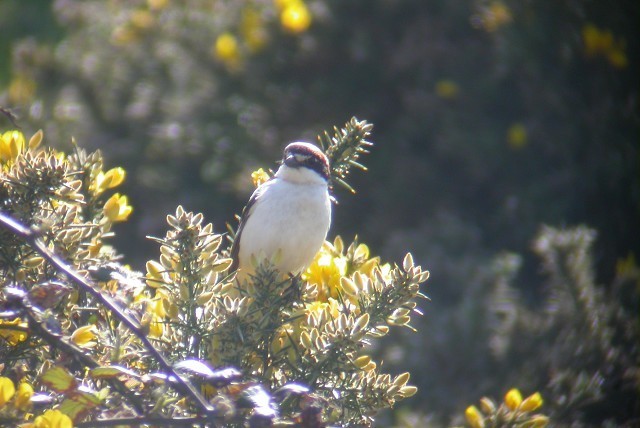
Woodchat Shrike, Church Cove, Cornwall (Photo: Mark Worden)
In Worcestershire, a possible Iberian Chiffchaff was trapped and ringed near Little Malvern on 12th (having first been noted on 9th) and it was still singing on 13th. Its song was described as being unlike an Iberian Chiffchaff, and its plumage was described as being not overly like Iberian too — so, a hybrid maybe, or perhaps another type of continental Chiffchaff?
On Lewis in the Outer Hebrides, an impressive six White-billed Divers were seen near Port Skigersta on 10th, with one there the following evening (the pod of 15 Orcas there would have more than made up for the lack of banana-bills!). Two more White-billed Divers were in the bay off Burghead (Moray) on the afternoon of 14th. Elsewhere other seabirds this week included a couple of Balearic Shearwaters off St. Ives (Cornwall), also on 10th.
The Irish Glossy Ibis at Tacumshin (Co. Wexford) was still on site until 11th. In Somerset two Glossy Ibises reappeared during the week, from 8th–12th at least, around Shapwick Heath and Ham Wall, while nearby at Meare Heath a Great White Egret lingered to 11th at least. At least seven others were noted during the review period, including a new arrival in west Cornwall, at Marazion Marsh on 9th (departing on 10th and appearing briefly at Stithians Reservoir too, before reappearing at Marazion on 11th). In Scotland, the bird seen at the end of last week at Rescobie Loch (Angus) was still present on 8th, also appearing at Balgavies Loch on 13th.

Great White Egret, Marazion, Cornwall (Photo: Samuel Williams)
Single Cattle Egrets remained at Wareham (Dorset) and Sennen (Cornwall), while some 40 Spoonbills were spread far and wide, and included 12 together in Dorset, three still in north Cornwall and two each in Cleveland and Cork.
One or two single Common Cranes appeared along the north Norfolk coast during the week, and two birds were still in West Sussex (at Pulborough Brooks) on 8th. Two birds over Farmoor Reservoir later the same day could have been the same pair. Whether these were then the same two seen in Derbyshire, West and North Yorkshire the following day is hard to say. In Northumberland, a Crane seen over Tweedmouth on 8th was seen later the same day at Dowlaw (Borders) and then at nearby St. Abb's Head the following day. Further single birds were noted in Cumbria and Highland on 10th, while three Cranes were seen at Tophill Low and Driffield (East Yorkshire), also on 10th. A further trio appeared over a couple of sites in Essex on 12th, nipping to Suffolk the following day. Also on 13th, two birds were seen in Nottinghamshire and four were seen in East Yorkshire, at Pulfin and High Eske NR, appearing in North Yorkshire over Wheldrake Ings the following day. As the 14th drew to a close, those same four birds had made it to Loch of Kinnordy RSPB (Angus). Further north still, a Crane was seen over Virkie, Mainland (Shetland) on 13th.
A Purple Heron flew over Weir Wood Reservoir (East Sussex) on 8th. Two (presumed wild) White Storks were noted, initially at Muchelney (Somerset) early on 9th before appearing near Burnham-on-Sea and then across the Severn Estuary, at Rogerstone (Gwent), later the same day. By the afternoon of 10th, they had found their way to Anglesey, where they remained to the morning of 11th before moving to Conwy later in the day. Single White Storks (origins unknown) were seen in Lothian, Cleveland, Derbyshire and Greater Manchester between 8th and 11th, and over Colchester (Essex) and on the edge of the Arne RSPB reserve (Dorset) on 13th. Singles in West Yorkshire on 10th and Clyde and Dumfries & Galloway on 11th were thought to have been escapes. A Great Bustard from the Salisbury Plain reintroduction project was on Otmoor (Oxon) on 10th–11th.
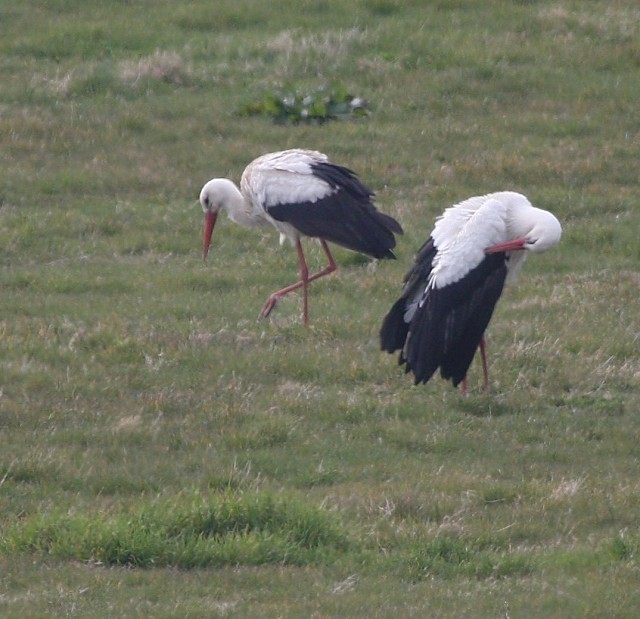
White Stork, Wylfa Head, Anglesey (Photo: Steve Culley)

Great Bustard, Otmoor RSPB, Oxfordshire (Photo: Nigel Forrow)
The trio of Snow Geese (two blue, one white) were still at Gollanfield near Inverness Airport (Highland) on 8th–11th. A blue Snow was at Blackhill near Loch of Strathbeg (Aberdeenshire) on 8th and a white Snow was down the road on the RSPB reserve on 10th and 13th. Further lone white birds were still in Cumbria and Argyll at the start of the week.
The two Richardson's Canada Geese were still at Ballintemple (Co. Sligo), along with the presumed Atlantic Canada Goose, to 8th at least, and two single Richardson's were still on Islay (along with a Canada Goose sp.) to 13th. Black Brants were at Keyhaven Harbour and Hurst Beach (Hampshire) on 8th and 12th with further singles at Hunstanton (Norfolk) on 11th and Freiston Shore (Lincolnshire) on 13th.
There was a distinct falling away in numbers where diving ducks were concerned this week: the UK's only Lesser Scaup were the adult drake at Cosmeston Lakes (Glamorgan) on 8th, which headed back to Cardiff Bay on 11th, and a drake reported at Shapwick Heath (Somerset) on 13th (although subsequent searches produced only an Aythya hybrid). Only six Ring-necked Ducks were noted: new birds were drakes at Loch Calder (Highland), presumably the same male that was seen here in April 2009; East Croachy (Highland) on 12th; and on Ardnave Loch, Islay (Argyll) on 13th. The female remained on Ancum Loch, North Ronaldsay (Orkney) to 13th at least and another drake was on Lough Gur (Co. Limerick) to 11th. Over on Guernsey, the first-winter female Lesser Scaup was still at La Grande Mare to 13th at least. In Somerset, the drake Ferruginous Duck remained at Chew Valley Lake to 14th.
In Wales, the young drake or female-type Black Duck was still at Llansanffraid Glan Conwy to 9th (when it was said to have been very distant). In Cleveland, a drake Blue-winged Teal was found at Saltholme Pools on 8th and new Green-winged Teal were noted at Marloes Mere (Pembrokeshire) on 9th–12th, Tory Island (Co. Donegal), also on 9th, Guardbridge (Fife) on 10th–12th and Swine Moor (East Yorkshire) on 12th. Another also remained at Eyebrook Reservoir (Leicestershire) to 13th.

Black Duck, Llansanffraid Glan Conwy, Conwy (Photo: anon)
The female Surf Scoter at Dawlish Warren (Devon) was still in place to 11th, while two drakes were noted off Ruddon's Point (Fife) on 9th (with one there the next day). Single drakes on 12th were seen off Gosford Bay (Lothian) and in the Sound of Taransay (Outer Hebrides). In Aberdeenshire, a drake King Eider was found in Cruden Bay on the morning of 11th.
A white Gyrfalcon was seen near Priesthope Hill (Borders) on 10th, while Rough-legged Buzzards were seen at Gibraltar Point, Boston and Newton (Lincolnshire), all on 8th. A Black Kite was at Looe (Cornwall) on 13th and a Snowy Owl was at Aird an Runair, North Uist (Outer Hebrides) on 14th.
The White-tailed Eagle seen at the end of last week was still around Whitton Sand (East Yorkshire/Lincolnshire) on 8th and may have been the bird seen the next day at Barden Scale Raptor Viewpoint (North Yorkshire). In Lancashire, a probable White-tailed Eagle was reported from Burn Moor on 10th and was firmed up as it headed over Leighton Moss on the morning of 11th, hitting Haweswater (Cumbria) later the same day (having a tussle with the local Golden Eagle as it passed by).
Last week's Isle of Wight Black-winged Stilt became this week's London Black-winged Stilt, the male at Rainham Marshes on 8th bearing more than an uncanny resemblance to the Yarmouth bird. Just as was the case on the Isle of Wight, this was a huge bird for local listers — there have been just four records (of six birds) in the Greater London area, the most recent of those being two (on the Hertfordshire border) in May 1984. That said, there is another Rainham record (listed, confusingly, in its old haunt of Essex) of a young bird from 10th–20th September 1997. Glad that's cleared up then...

Black-winged Stilt, Rainham Marshes RSPB, Greater London (Photo: Simon West)
A late report from Cumbria for last week was of a Dotterel at Cross Fell on 7th, while this week a Dotterel was again at Porthgwarra and Polgigga (Cornwall) on 9th. In Norfolk, a Kentish Plover was seen on the beach at Holme on 13th.
The adult Bonaparte's Gull was still along the River Taff, Cardiff (Glamorgan) to 11th and the only Ring-billed Gulls of the week were two first-winters at Cuskinny Marsh (Co. Cork) on 10th, another first-winter at Kinsale Marsha (also in County Cork) on 11th, a second-winter still in Limerick on 13th and the adult still at Oban (Argyll) on 11th.
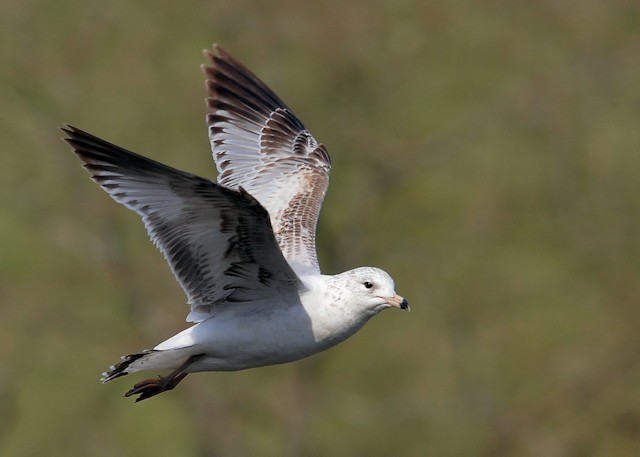
Ring-billed Gull, Cuskinny Marsh, Cork (Photo: Ronan McLaughlin)
Iceland Gulls tallied around a dozen birds, with Glaucous Gulls scoring a similar tally. Four Caspian Gulls were at Minsmere (Suffolk) on 8th, three were along the coast at Orford Ness on 11th, a first-winter was at Dungeness (Kent) on 10th, a third-winter was at Frampton Marsh (Lincolnshire) on 13th and a first-winter was seen flying into the Humber from Spurn (East Yorkshire) on 14th.
In Kent, the Alpine Swift was still at Folkestone on 8th and another was reported over Braintree (Essex) on 10th. A brief fly-by was at Durlston CP (Dorset) on 11th. Back in Folkestone, the first Wryneck of 2010 was seen in the town's Radnor Park on 9th and the second of the year appeared at Lound (Suffolk) on 11th. An early Golden Oriole was reported a few miles from Lochgilphead on 13th.
A late Hoopoe was reported from the Devon/Cornwall border (at Tamar Lakes) on 7th, while this week up to 13 birds were noted. In Cornwall, singles were at Polgigga and Rame Head on 8th, while the 9th saw one appear on St. Agnes (Scilly), followed by another on Bryher on 11th, with St. Agnes represented again on 12th. A Hoopoe at Lower Moor (Worcestershire) on 10th was a nice inland find while, back in the southwest, another Hoopoe was at Bolt Head from 10th. The 11th saw Pembrokeshire, Essex and the Outer Hebrides get in on the act, with singles at St. Ishmael's, Vange and Malacleit, North Uist. A new bird was in Heybrook Bay (Devon) on 12th, and on 13th one was reported at Heywood (Greater Manchester). The final bird of the week was found on Jura (Argyll) on 14th. In Ireland, a Hoopoe at Tacumshin on 9th actually turned out to have been present for at least three weeks, while another new arrival was the bird at Roscrea (Co. Tipperary) on 10th.

Hoopoe, Lower Moor SW, Worcestershire (Photo: Ross)
Departing Great Grey Shrikes were found at Filey (North Yorkshire) on 9th, Holme-next-the-Sea (Norfolk) on 10th and Rackwick, Hoy (Orkney) on 12th. In Lancashire, the bird at Waddington Fell was in song from 8th–10th, with others remaining in Somerset, Ceredigion, Pembrokeshire and Northumberland.

Great Grey Shrike, Filey, North Yorkshire (Photo: John Harwood)
Four Waxwings were seen near Glasgow (Clyde) on 13th, eight were at Kesgrave (Suffolk) on 14th (with a single at Wray in Lancashire, the same day) and two were reported from The Lodge, Sandy (Bedfordshire) on 9th, where the female Two-barred Crossbill showed once again on 10th–11th.
Single Serins were seen at St. Margaret's at Cliffe on 9th and 10th (the latter lingering, off and on, to the afternoon). In Highland the sometimes-singing male Little Bunting at Dunnet Bay's stay of over three months finally came to an end this week, the bird seemingly departing sometime overnight on the evening of 8th.
Photo of the Week

Marsh Harrier, Minsmere RSPB, Suffolk (Photo:
Jon Evans)
Hot on the heels of his first Photo of the Week, bird photographer Jon Evans has hit the top spot again this week with a stunning flight shot of a Marsh Harrier taken at Minsmere. With this shot, Jon illustrates one of the best techniques for photographing birds in flight without losing plumage details to shadow areas: shoot with the sun low in the sky behind you and capture your subject as it banks steeply. On a clear day, facing away from the sun will also give you the bluer skies that make the best backdrops for flight shots. Using these techniques to great effect, Jon has created a highly colourful image which, together with a dynamic pose, good head angle and tight crop, adds up to a captivating composition.

Black-tailed Godwit, undisclosed site, Lancashire (Photo:
Tom Charles)

Common Kingfisher, Big Waters NR, Northumberland (Photo:
Keith Cochrane)

Black Grouse, Aviemore, Highland (Photo:
Mark Hancox)
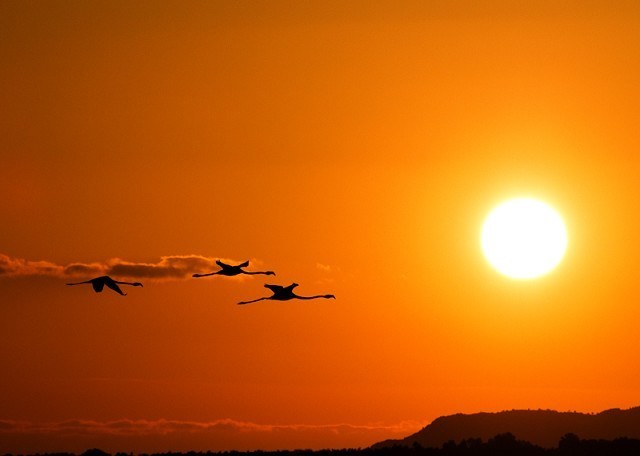
Greater Flamingo, Spain (Photo:
Marcus Conway - ebirder)

Red Kite, undisclosed site, Powys (Photo:
Tom Melton)

Great Spotted Woodpecker, New Forest, Hampshire (Photo:
Simon Johnson)

Razorbill, Bempton Cliffs RSPB, East Yorkshire (Photo:
Steve Race)

Bittern, Minsmere RSPB, Suffolk (Photo:
Amanda Hayes)

Merlin, The Wig, Dumfries & Galloway (Photo:
Gavin Chambers)

Red-legged Partridge, Otmoor RSPB, Oxfordshire (Photo:
Nigel Forrow)

Marsh Tit, Warburg NR, Oxfordshire (Photo:
Ian Curran)

Common Redshank, Salthouse, Norfolk (Photo:
David Whistlecraft)
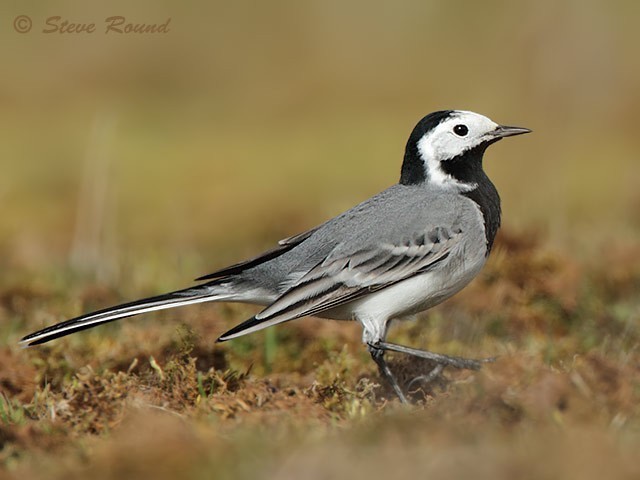
White Wagtail, undisclosed site, Lancashire (Photo:
Steve Round)

Yellowhammer, undisclosed site, Staffordshire (Photo:
Richard Steel)

Robin, Shrewsbury, Shropshire (Photo:
Maurice Baker)

Yellow-billed Oxpecker, Gambia (Photo:
Ed Taylor)

Little Ringed Plover, undisclosed site, Nottinghamshire (Photo:
John Dickenson)

Little Owl, undisclosed site, Suffolk (Photo:
Chris Upson)

